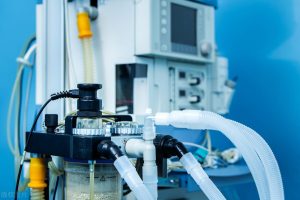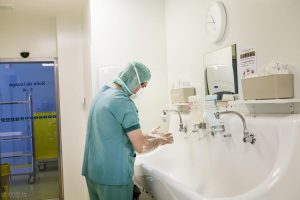A Comprehensive Guide for Safe Operating Room Practices
Anesthesia machines are essential equipment used in operating rooms to deliver safe and effective anesthesia during surgery. To ensure patient safety, it is crucial to clean and disinfect anesthesia machines regularly. In this article, we will discuss the cleaning methods for anesthesia machines, their advantages and disadvantages, and control measures in various countries.

Cleaning Methods of Anesthesia Machines
There are several methods for cleaning anesthesia machines, including manual cleaning, automated cleaning, chemical disinfection, and sterilization.
Manual Cleaning: This method involves manually cleaning the surfaces of the anesthesia machine with a detergent and water solution. The surfaces are then rinsed and dried. Manual cleaning is a cost-effective method, but it requires significant labor and time.

Automated Cleaning: Automated Internal Cleaning: This method involves cleaning the anesthesia machine with automated disinfection
The device uses disinfectant and ozone to clean the inside of the machine, destroying germs and microbes. Automated cleaning is less labor-intensive and time-consuming than manual cleaning, but it is more expensive.
Chemical Disinfection: This method involves using a chemical disinfectant to kill microorganisms on the surfaces ofthe anesthesia machine. Chemical disinfectants can be applied manually or through automated systems. Chemical disinfection is effective in killing microorganisms, but it requires proper handling and can be harmful to the environment if not disposed of correctly.
Sterilization: This method involves using high heat or steam to kill all microorganisms on the surfaces of the anesthesia machine. Sterilization is the most effective method of cleaning anesthesia machines, but it can be costly and time-consuming.
Advantages and Disadvantages of Cleaning Methods
Each cleaning method has its advantages and disadvantages. Manual cleaning is cost-effective, but it requires significant labor and time. Automated cleaning is less labor-intensive, but it is more expensive. Chemical disinfection is effective in killing microorganisms, but it requires proper handling and can be harmful to the environment. Sterilization is the most effective method, but it can be costly and time-consuming.
Control Measures for Anesthesia Machines in Operating Rooms
Control measures for anesthesia machines in operating rooms vary in different countries. In the United States, the Association of periOperative Registered Nurses (AORN) recommends that anesthesia machines be cleaned between each patient use and that the cleaning process be documented. In Canada, the Canadian Standards Association recommends that anesthesia machines be cleaned and disinfected after each use, and that the cleaning process be documented. In the United Kingdom, the National Health Service recommends that anesthesia machines be cleaned and disinfected after each use, and that the cleaning process be documented.
finally
Cleaningand disinfecting anesthesia machines is crucial to ensure patient safety during surgery. Manual cleaning, automated cleaning, chemical disinfection, and sterilization are the most common cleaning methods used for anesthesia machines. Each cleaning method has its advantages and disadvantages, and it is essential to select the appropriate method based on the specific needs of the healthcare facility. Control measures for anesthesia machines in operating rooms vary in different countries, but they all emphasize the importance of proper cleaning and documentation. By following the appropriate cleaning methods and control measures, healthcare facilities can ensure safe and effective anesthesia delivery in operating rooms.